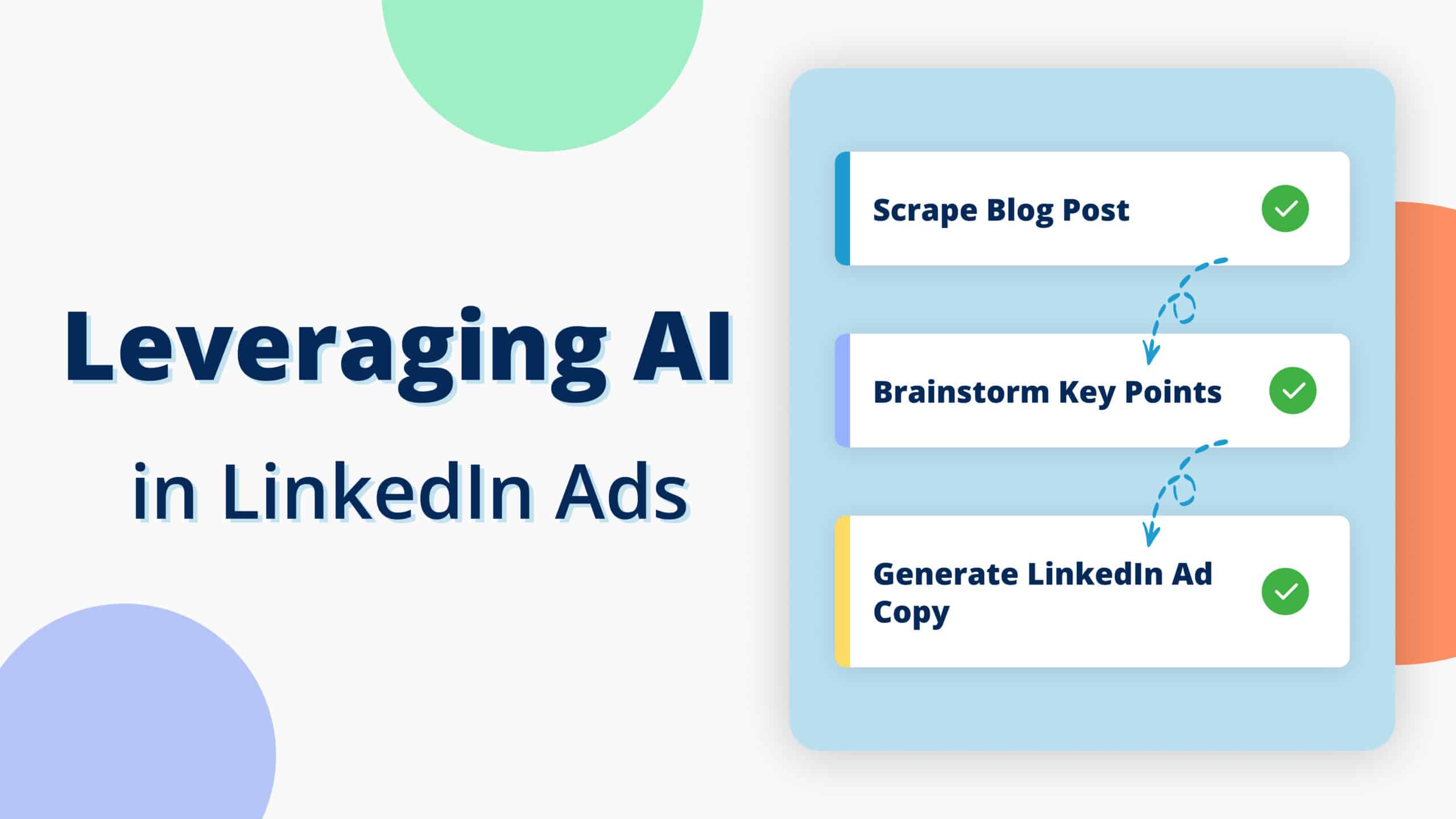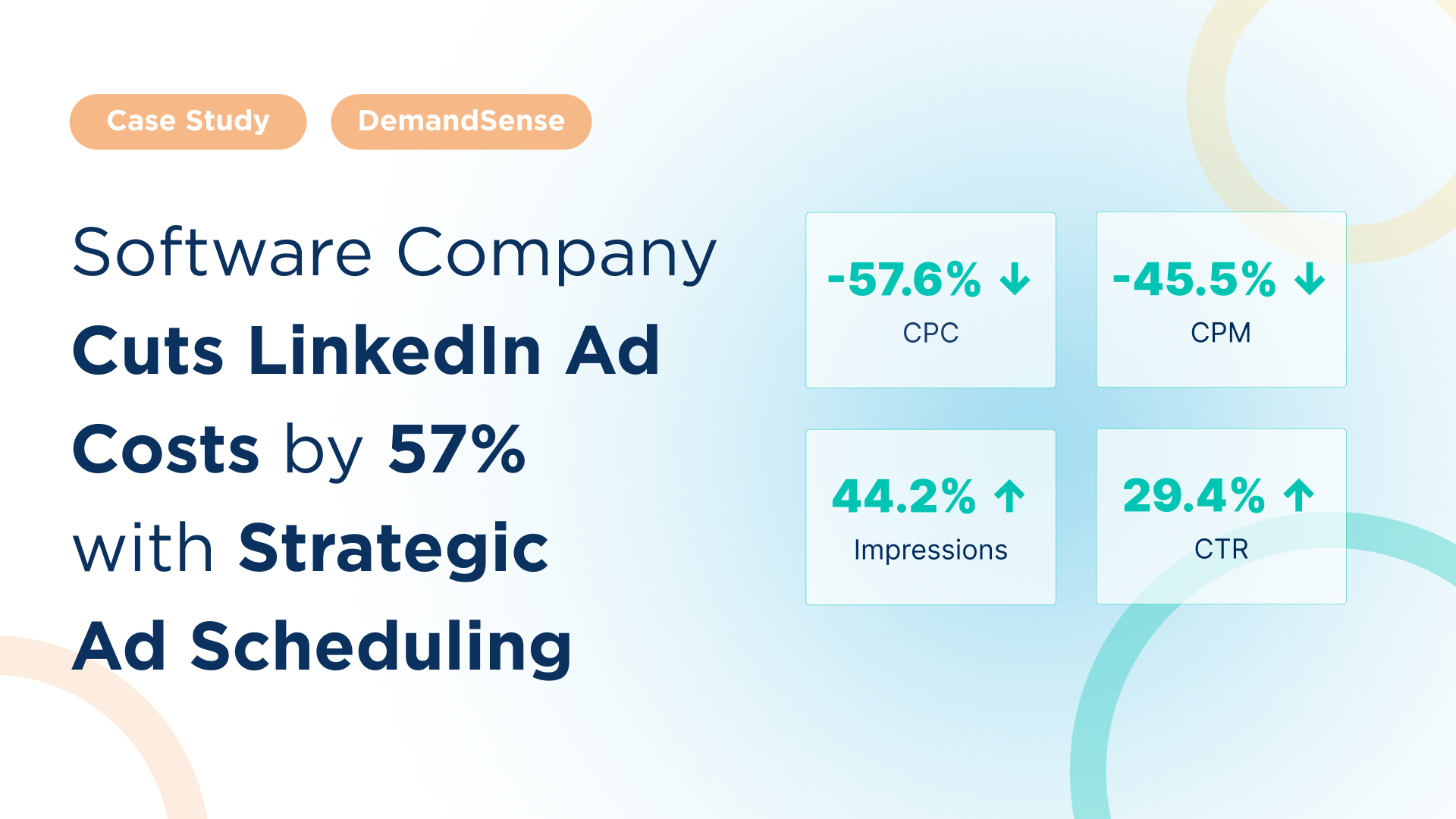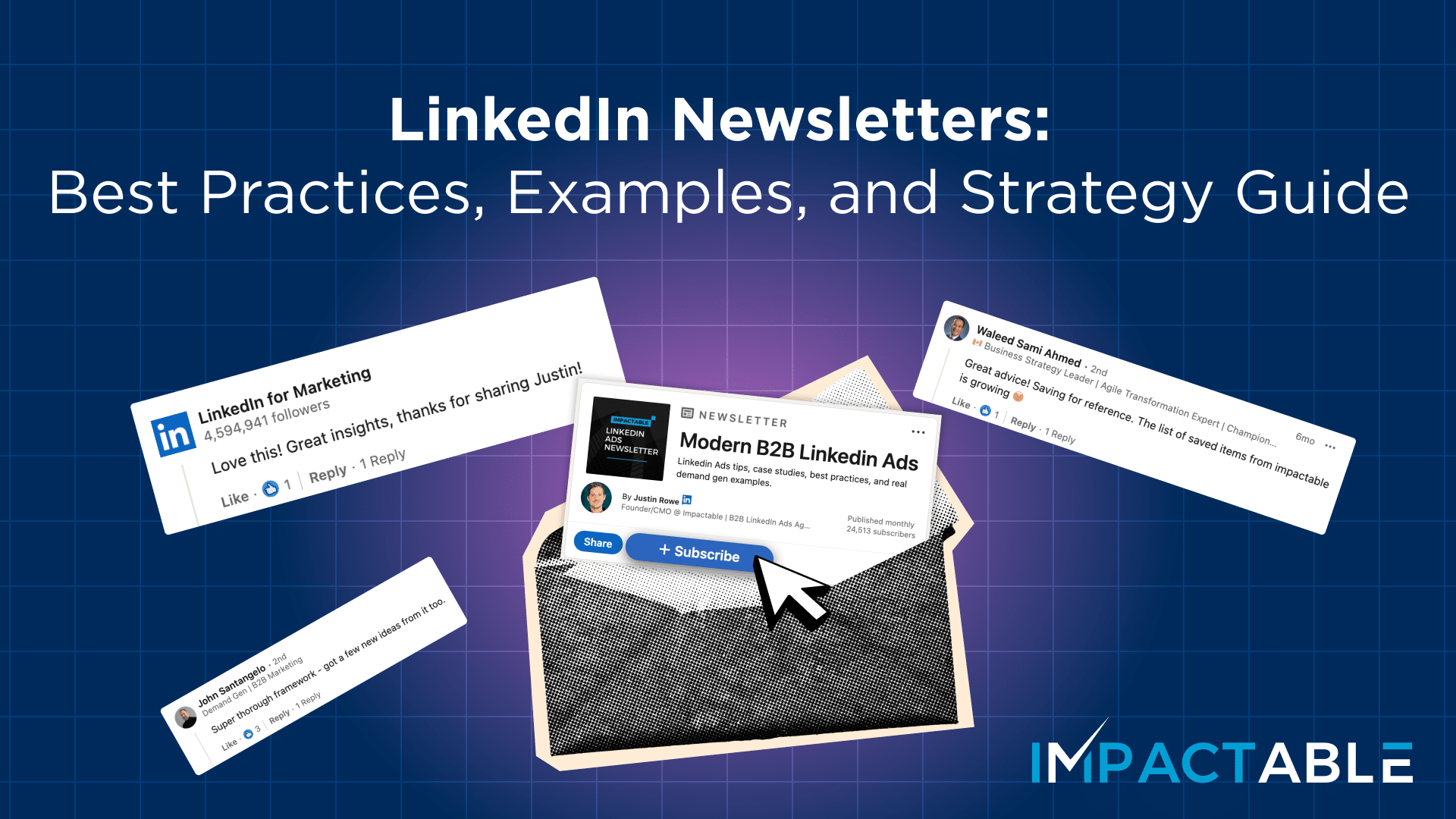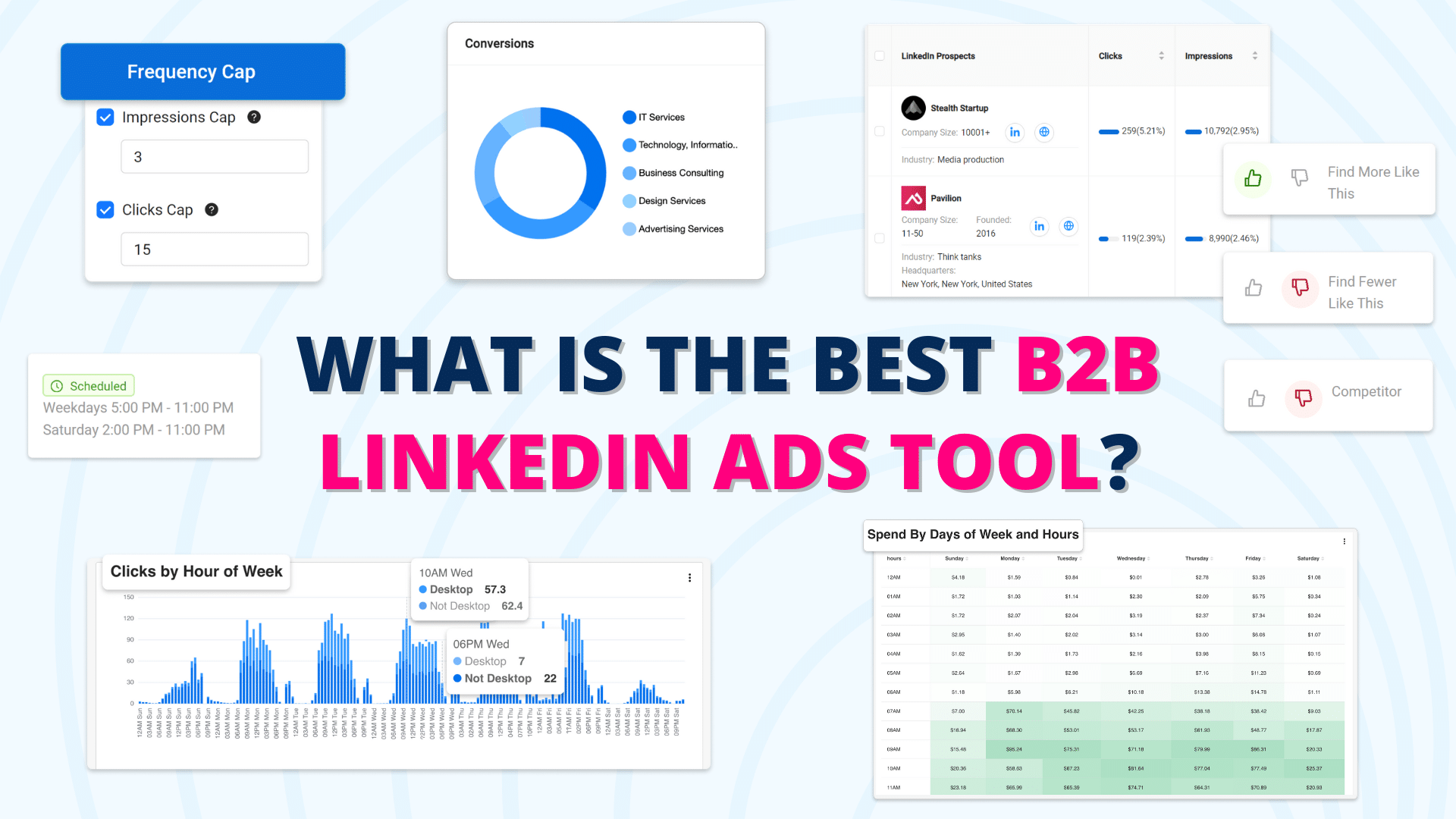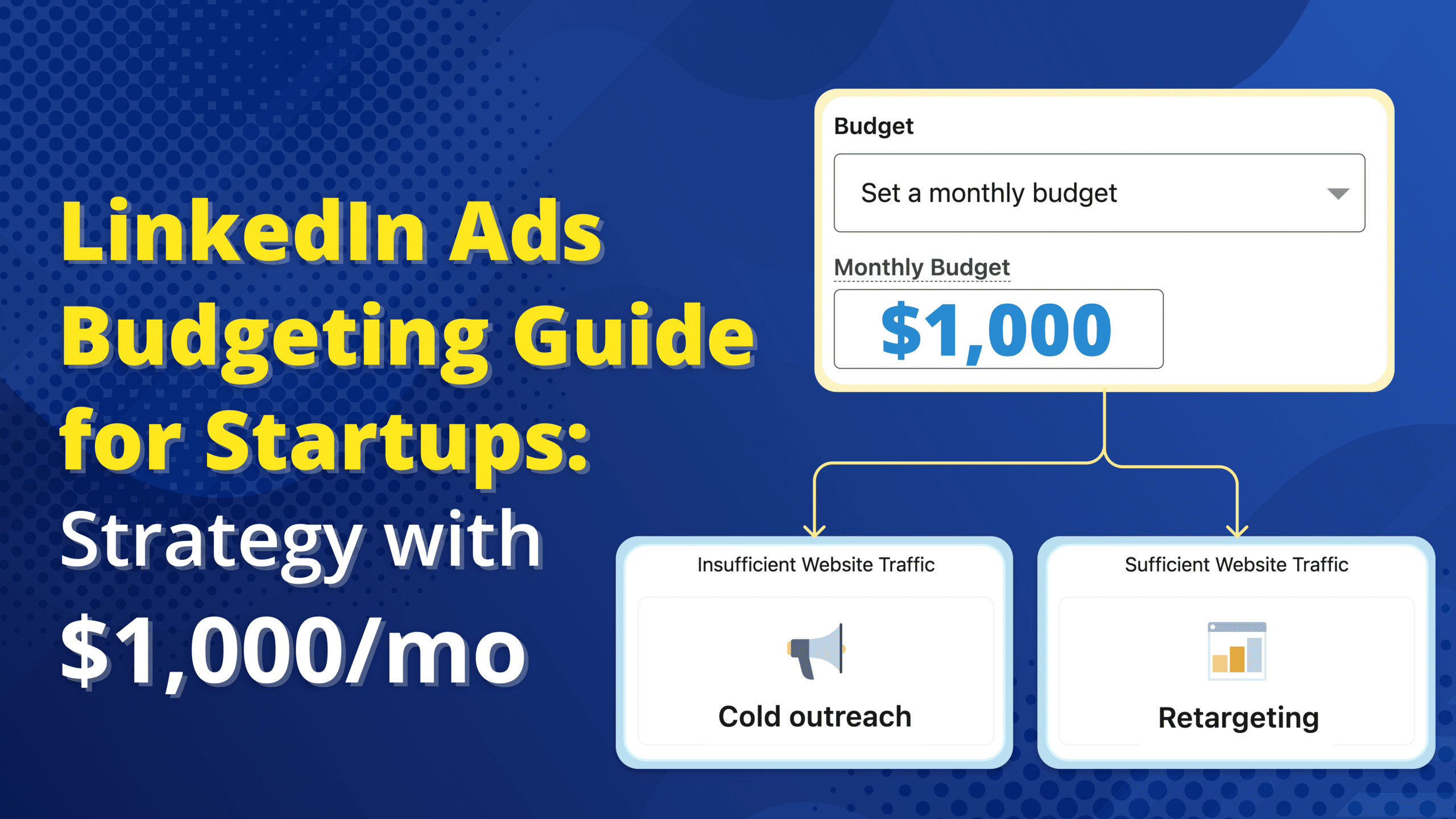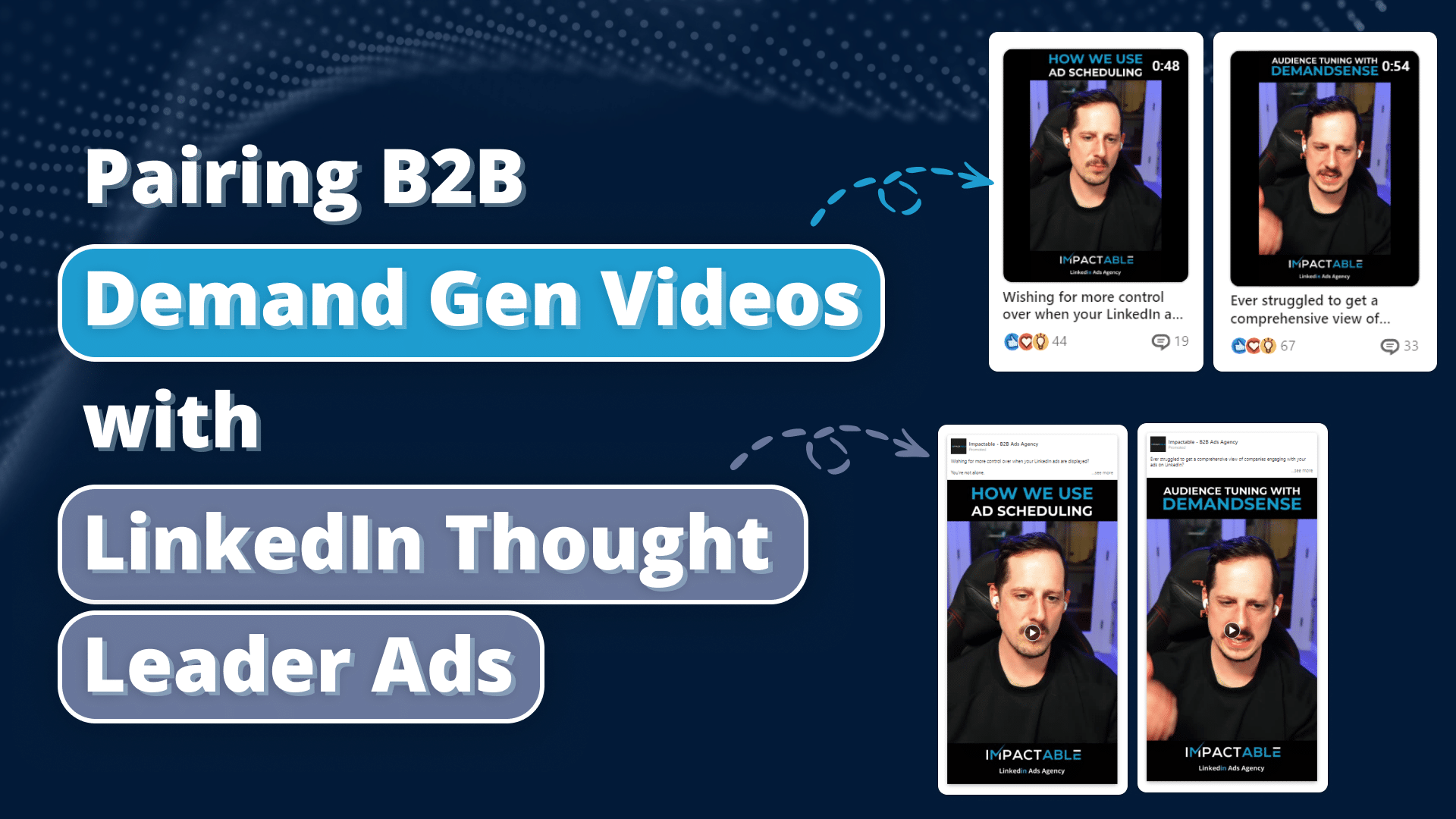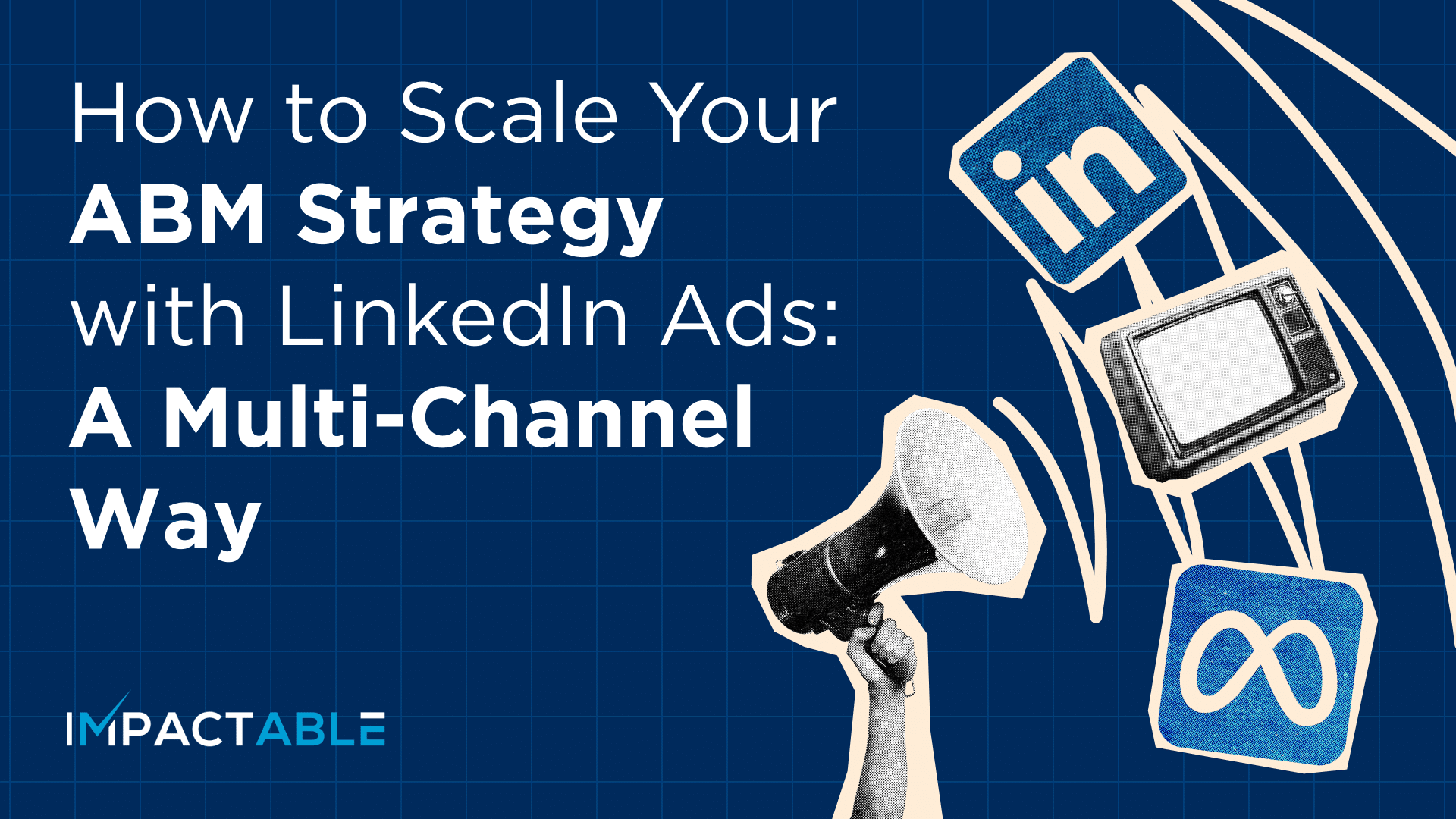Unless you’ve been living under a rock, you’ve probably noticed that artificial intelligence, or AI, is everywhere. There’s a ton of talk about it in articles, social media, and YouTube videos.
In the AI world, there are two main camps: those who swear by its immediate adoption for businesses to stay competitive and those who doubt its real value, seeing it as just another passing trend.
In this article, I’ll share some practical AI use cases, focusing on how we’ve leveraged it in our LinkedIn advertising efforts and exploring how AI can be more than just hype and make a difference in your advertising strategy.
What Types of AI We Use the Most
Let’s begin with a brief overview of the key areas of AI that startups should focus on. Then, I’ll dive into what’s currently on our radar at our LinkedIn ads agency.
1. Text generation AI
Let’s start with text generation AI, which revolves around language models like ChatGPT or Copy.ai, among others.
While there are numerous options available, two of the standout platforms are Claude and ChatGPT. Claude excels in summarizing large volumes of text efficiently, while ChatGPT has undergone significant advancements, expanding its capabilities to offer a wide range of functionalities.
2. Image generation AI
Next, there is image generation AI. One notable platform in this domain is Dall-E, which is affiliated with OpenAI. Dall-E specializes in producing a diverse range of images, including animations and lifelike visuals.
Another noteworthy player in this field is Midjourney, which was among the pioneers of image AI. Alongside Dall-E, various other tools have emerged, each offering unique capabilities and contributing to the evolution of image generation technology. Many editing and graphic design tools, such as Canva, now come packed with AI add-ons for all sorts of things.
3. Video editing AI
And then there’s a third one that’s on my radar – AI editing tools, particularly those focused on video editing and clipping. While some platforms are also evolving to cater to podcast content, two notable ones in this realm are Descript and Opus Clip.
Opus Clip stands out for its seamless process: users can input a YouTube URL, and the platform automatically analyzes the video, identifies key topics, and generates separate clips. It handles tasks such as clipping, subtitling, and formatting with a single click. On the other hand, Descript offers a more nuanced approach. Users can easily edit the video by simply editing the transcript which is pretty genius and the auto-subtitling is super easy to use.
Using AI to Save Time and Money
AI tools offer two main benefits:
- They give you new abilities, much like how Canva and Zapier revolutionized image design and automation.
- They help smaller companies and entrepreneurs do more with less.
But where should you start? And what might not be worth your time? Let’s explore practical tips for making the most of AI.
1. Brainstorming and Planning with AI
When it comes to leveraging AI, one tool stands out for me: ChatGPT and similar generative text platforms. They draw from vast knowledge bases, making them perfect for brainstorming sessions.
For instance, let’s say you’re planning a conference. You could spend hours researching, but AI can streamline the process. ChatGPT can provide creative solutions and insights based on similar scenarios by inputting your goals, constraints, and objectives.
I’ve personally used AI in conference planning, and it offered some great ideas I wouldn’t have thought of on my own. Of course, I didn’t let AI take over entirely—I used its suggestions as a starting point and then tweaked them to fit my vision and conducted dozens of iterations.
As a business owner or startup, you’ll face various challenges. Often, these problems aren’t new—they’ve been tackled by others. However, finding existing solutions can be tricky when navigating uncharted territory. This is where AI shines.
Consulting AI tools like ChatGPT can help surface creative solutions to your unique issues. While AI won’t run your business or make crucial decisions, it can kickstart productive brainstorming sessions and steer you in the right direction by accessing massive databases of stored information and surfacing relevant answers.
2. Copy Variations for Testing Your Messaging
Another big way AI helps is by generating ad copy variations. Top AI models made for marketing agencies come with built-in prompts and structures to ensure effective messaging follows tried and true frameworks.
If you ask your team to write an ad copy, it might not be very exciting. You need to create a detailed prompt, outlining principles, examples, goals, and best practices for the ad. While experts can come up with initial ideas, AI can then give you more variations based on those ideas. This lets you use your expert’s ideas as a starting point and then use AI to come up with more options for testing and optimization.
As AI gets better, its role in copywriting will become increasingly valuable. Agencies will likely create their own best practices, examples, and libraries of top-performing ads to train AI models.
While AI straight out of the box might not write amazing B2B copy on its own, with the right structured input, it can be a big help.
3. Content Creation and Revitalization
AI is a game-changer when it comes to refreshing and updating content.
For example, imagine you have an older blog post that needs a facelift. Instead of manually researching and updating each one, AI can streamline the process. By analyzing the existing content and identifying gaps, AI tools can generate updated blog posts.
This approach saves significant time, especially if you’re tackling multiple blogs. With the right AI workflow, you can revitalize your content library in a fraction of the time it would take manually.
4. Chatbots for better customer experience
A few years ago, chatbots were all the rage, but they were often costly and overly complex, or they simply served as gateways to human support.
Now, with advancements in AI, chatbots have become more practical. Imagine having a chatbot tailored to your business—it can handle basic queries, guide users, and even learn from interactions to provide better responses over time.
Investing in such a chatbot can significantly improve your customer service, making it a worthwhile investment for businesses aiming to enhance their customer experience.
5. Data Analysis for Ad Performance
Data analysis can be a real time sink, especially for advertising agencies. Fortunately, AI is stepping in to lighten the load.
Imagine uploading a large dataset of over 100 ads into an AI tool like ChatGPT4. You could then ask it to analyze the top 10 performers and the bottom 10 performers, extracting valuable insights from each.
This process, which could take a human several hours, can be completed by AI in a matter of minutes. Not only does it save time, but it also ensures high-quality analysis, providing actionable insights for optimizing ad performance.
By leveraging AI for data analysis, advertising agencies can streamline their workflows and deliver better results for their clients.
6. Video Editing Simplified with AI
One of the things we’re really leveraging, both for my own content and now as part of our client offerings, are AI editing tools like Descript.
These tools are game-changers, especially for solopreneurs looking to boost productivity. Just like Canva revolutionized design for many of us, Descript does the same for video editing, even if you lack formal training.
With Descript, you simply upload your video, and it automatically generates a transcript of the audio. From there, editing becomes a breeze. Deleting a sentence from the transcript removes that section from the video.
Descript also streamlines tasks like adding subtitles, creating short clips, and adjusting formats. It’s like having a professional editor at your fingertips.
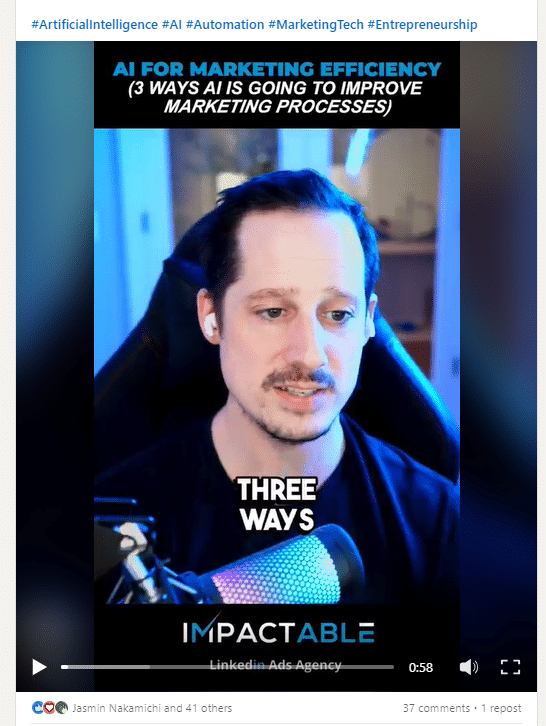
This level of convenience is invaluable. In the past, the thought of producing multiple videos a week seemed daunting. But now, thanks to AI, tasks like editing, subtitling, and formatting are much more manageable, saving both time and effort.
7. AI Workflows for content creation
I want to highlight a tool that really showcases where AI is headed: Copy.ai. What sets it apart is its AI workflows, which I find incredibly powerful.
With tools like ChatGPT, you quickly learn that the quality of the output depends on the quality of the input. So, you refine your prompts to get better outcomes.
Here’s where it gets interesting. You start chaining prompts together. For example, you could feed a transcript into ChatGPT and ask for an outline. Then, based on that outline, you ask for a blog post. And from that post, you ask for a title, meta description, and even prompts for images.
Copy.ai simplifies this process. You can set up a series of prompts in one go. Upload your transcript, and it generates everything you need – outline, blog, title, meta description, image prompts, and more.

This streamlined workflow saves a ton of time. Of course, each prompt needs to be well-crafted to ensure accuracy and quality throughout the process. But once set up, it’s a game-changer for content creation efficiency.
Conclusion
To sum up, AI offers numerous opportunities to enhance your startup and advertising efforts, especially on platforms like LinkedIn. However, focusing on practical applications is key.
Start with tasks like ideation and brainstorming, as well as generating variations of existing content. These AI-driven processes can significantly streamline your workload, saving you valuable time and energy.
Additionally, explore tools that amplify individual capabilities, such as video editing software, and consider integrating solutions like Copy.ai into your workflow for repetitive tasks. By harnessing the power of AI in these areas, you can establish more efficient workflows and maximize productivity in your daily, weekly, or monthly operations.


